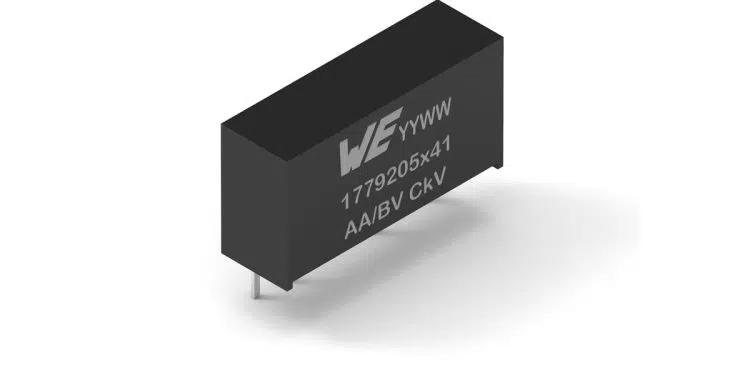The family of MagI³C FISM power modules has grown: Würth Elektronik presents the next generation of 1 W “Fixed Isolated SIP / SMT Modules”. The outstanding features of the improved integrated voltage converters include continuous short-circuit protection (SCP) and increased isolation voltage. The nine new modules in standard SIP-4, SIP-7 and SMT-8 packages are pin-to-pin compatible with the previous MagI³C FISM.
The MagI³C FISM power modules are fully integrated DC/DC voltage converters with a fixed output voltage. The modules contain the power stage, transformer, input and output capacitance. No external components are required for operation, and circuit design effort is minimal. This reduces development costs and makes it possible to go to market quickly with new applications.
The entire product line is certified to the current UL standard UL62368-1, but the new modules offer even more safety. They cannot be destroyed by short circuits and can withstand their isolation voltage of 1.5 kV for the SIP-4 modules and 3 kV for SIP-7 and SMT-8 for a full 60 seconds.
This makes the new MagI³C-FISM more useful as functional isolation to prevent ground loops and ground level offsets as well as to prevent interference in signal path or sensor systems. This isolation voltage is important when designing power supplies for interfaces and microcontrollers within test equipment or industrial electronics.
Excellent Electromagnetic Properties
Würth Elektronik measured the modules with filter combinations, whose parts are listed in the data sheet, and found: The radiated and conducted emissions of the MagI³C-FISM modules are below the limits of the EMC standard EN55032 / CISPR32 Class B.
The new members of the MagI³C-FISM family are available from stock. With their easy-to-assemble leaded SIP-4 and SIP-7 packages with through-hole or the SMT-8 packages, which can also be soldered manually, they are suitable for prototyping – free samples can be requested for this purpose.






























